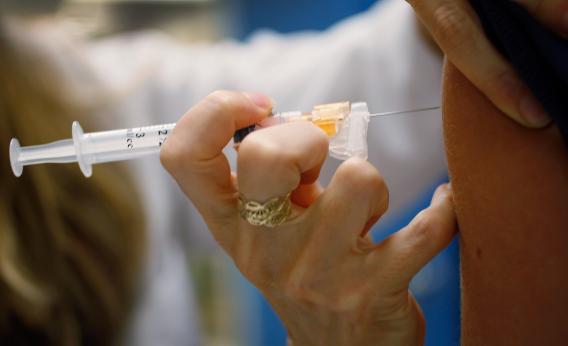Why aren’t more teenage girls getting vaccinated against the human papillomavirus (HPV)? The New York Times reported last week that vaccination rates for the disease, which is the most common sexually transmitted infection and “a principal cause of cervical cancer,” failed to improve from 2011 to 2012. This despite the fact that the rates at which people get “new vaccines typically increase by about 10 percentage points a year,” according to Dr. Thomas R. Frieden, director of the Centers for Disease Control and Prevention.* And despite that experts have recommended since 2007 that girls receive the triptych of shots at age 11 or 12. Every year, HPV causes about 19,000 cancers in women (mostly cervical) and close to 8,000 cancers in men (mostly throat). Yet, says the Times, “only 33 percent of teenage girls finished the required three doses of the vaccine in 2012 … putting the United States close to the bottom of developed countries in coverage.”
This strange and distressing news launched a fleet of theories: that teenage girls go to the doctor less frequently than toddlers, leading to fewer opportunities for vaccination; that patients—or their parents—are embarrassed to ask for an STI vaccine, and doctors are reluctant to broach the topic; that neither doctors nor patients are well-versed enough in the recent immunization literature to get the ball rolling. A study in the (delightfully named) Morbidity and Mortality Weekly Report, however, rules out hypothesis No. 1. Teenagers are receiving plenty of other inoculations, just not the ones for HPV. (“If HPV vaccine had been administered during health-care visits when another vaccine was administered,” the authors of the study write, “coverage … could have reached 92.6%.”)The vaccination flat line may flow from a combination of underinformed families and inconsistent doctors. “Providers give weaker recommendations for HPV vaccination compared with other vaccinations recommended for adolescents,” researchers found. As a result, too many patients are either unaware of the vaccine or underestimate its importance.
Plus, “the HPV vaccine is controversial,” says Tai Warren, a receptionist at Washington Pediatric Associates in Washington, D.C. I had called to ask how frequently the shots get administered. “A lot of parents don’t want them for their children.” Warren couldn’t say whether parents most often object to the STI vaccine because they perceive it as a license to have sex, or because they are concerned about safety, or for some other reason. (More than seven years of study can attest that the procedure is safe, as well as effective.)
Sadi Bhattarai, a nurse at Chevy Chase Pediatrics in Washington, D.C., was not aware of any stigma surrounding the HPV vaccine. The procedure does prove slightly inconvenient: “We often have to call after the first round and remind families to get the second and third shots,” she says. Still, “at our practice, everybody gets vaccinated—boys and girls—when they come in for a physical and if they’re the right age.” Bhattarai ventures that the plateauing rates “are both doctor- and patient-driven,” since not all clinics have yet adopted the HPV immunizations as part of their standard operating procedure, and not all families know to ask.
But Chris Griffiths, of the city of Columbia, Mo., Health Department, thinks institutional lethargy is not wholly to blame. She senses a lingering wariness around HPV vaccination. “As a nurse, I bring [the vaccine] up to people, and they associate it with promiscuity,” she said. While her clinic, located in a liberal pocket of Missouri, makes a point of recommending the shots, other facilities in the state do not. Funding plays a role—to administer vaccines, a practice needs a separate locked refrigerator kept at a specific temperature and may rack up other expenses—but it is only part of the story. Patients and their families may also be dissuaded by insurance policies that fail to cover HPV inoculation. (The triplicate shot can cost up to $140 per dose.) Doctors may not want to incur a backlash by suggesting the vaccine.
Whatever the reason, we’ve trekked too far into the 21st century to be dithering over safe, easy, cancer-blasting vaccinations for children. (And it’s only 2013!) Though the explanations behind the plateau may be complicated, the solutions are simple. Insurance companies should cover HPV shots. Doctors should promote them. Patients and their families should embrace them. As Dr. Thomas K. McInerny, the president of the American Academy of Pediatrics, told the Times, “We have a powerful tool to prevent cancer. Let’s use it.”
Correction, July 30, 2013: This post originally misspelled CDC director Thomas R. Frieden’s last name.
